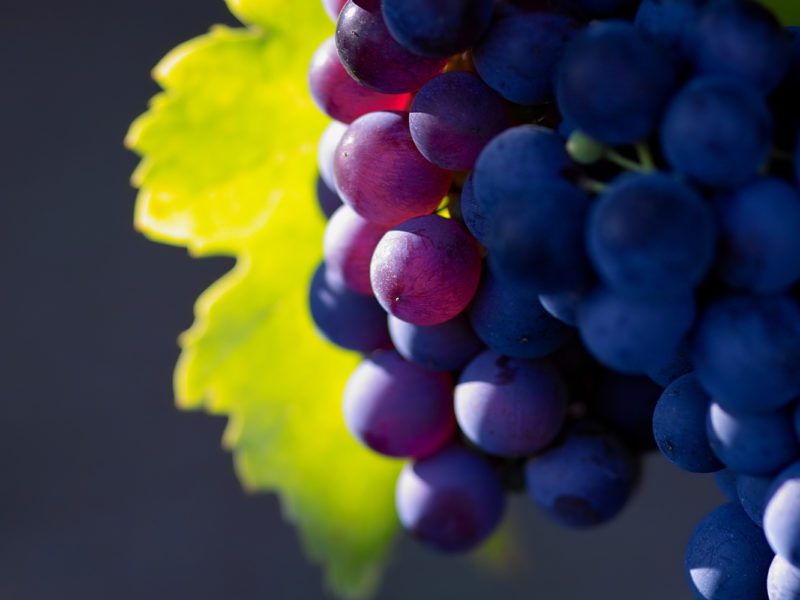
What Makes an Award-Winning Ohio Wine?
by Gary Twining
Ever wonder how a winemaker produces an award-winning wine? TheWineBuzz talked with four Ohio winemakers, each of whom recently received a double gold medal for their award-winning Ohio wines. The secret sauce? Knowledge, skill and passion, and these Ohio winemakers have plenty of all three.
Maize Valley Winery – Reserve Blanc
Winemaker, Todd Vaughn, says that Maize Valley Winery is using La Crescent to make its award-winning Reserve Blanc. La Crescent is a new grape varietal, released to vineyard owners in 2002, developed at the University of Minnesota for its cold hardiness. It is tolerant to minus 36 degrees Fahrenheit, and has scents and tropical flavors of apricot, pineapple and Muscat, with firm acidity.
Vaughn envisioned the flavor profile he wanted to achieve in Reserve Blanc. “The winery started from scratch, then dialed-in the component levels by letting the fruit hang on the vine until ripeness helped to balance naturally high acidity,” he explained. Vaughn likes a crisp white. “It is perfect for Fall,” he said, because it is refreshing.
Debonné Vineyards – Classic Red
Winemaker, Michael Harris, approaches this blend of French-American hybrid and vinifera grapes with flexibility, based on the impact weather has on the raw materials available each year. He trial-blends French-American hybrid grapes (Rosette, Chambourcin and DeChaunac) with vinifera grape varietals, such as Merlot and Cabernet Sauvignon. His goal, he said, “is to make a red wine with consistency from vintage to vintage that is pleasing but still unique, to draw the attention of the consumer.”
Harris blends grapes that are aged in stainless steel, with those that are aged in wood (in this award-winning vintage, Chambourcin and Merlot were aged in oak), and likes the wine to finish with pleasing flavors. Classic Red is made in a fruit-forward style with a delicate and balanced hint of oak, and finished with just a touch of residual sugar, to give it a smooth texture, and to make it appealing to the palates of a broad audience.
Vinoklet Winery – Passion – Blueberry
Winemaker and winery founder, Kreso Mikulic, has been making wine in America, for forty years. A native Croatian, he is proud of the effort that goes into this award-winning Passion – Blueberry wine. “To make great wines you have to combine knowledge and hard work,” he said. “You have to taste and experiment,” he added. “Most important is to have the best fruit.”
It’s hard work to use nothing but fruit in winemaking. Still, Mikulic said, “It is vital to squeeze the fruit and not to use artificial extracts. That way, you get the original flavors from the plant. Using only juice is expensive but gives the best flavors.” Mikulic added that the use of aroma and flavor extracts has no place in winemaking. To control quality, Mikulic recommends that winemakers grow the fruit and extract the juice, or work with suppliers who do the same.
Gervasi Vineyard – Sognata Vidal Ice Wine
“Making ice wine is a specialty, and takes a lot of effort,” said Head Winemaker, David Smith. The “normal” Vidal Blanc table wine harvest typically occurs in October. “But for ice wine, the grapes hang two, to two-and-a-half months longer, putting the fruit at great risk but enabling it to develop more flavor,” he explained. Fruit is harvested and pressed after being frozen at a minimum of 17 degrees Fahrenheit. The water in the grapes is left in the press as ice, further concentrating the flavors and sugar.
The press juice for this year’s ice wine harvest was at 41 brix. (Brix is the measure of sugar content in the juice, at harvest). Most table wines are harvested between 19 and 25 brix. High sugar and alcohol content can stress yeasts during fermentation, so Smith takes extra care, tasting the wine two to three times a day. “I find it exciting and really fun to use my personal smell and tastes to determine when to end the ferment, because it is all based on arbitrary balance levels,” he said. “When the flavors and balance between acidity, sugar and alcohol are pleasing, we chill the tanks to stop yeast activity,” he added. “At almost 21 percent residual sugar, there needs to be adequate acidity to cleanse the palate from the intense sweetness and encourage another sip of the apricot, herb-scented beverage that shows a hint of lime zest.”
Congratulations to Todd Vaughn, Michael Harris, Kreso Mikulic and David Smith. Heartfelt thanks to passionate, knowledgeable and skilled winemakers, everywhere. TheWineBuzz salutes you!
For more information:

